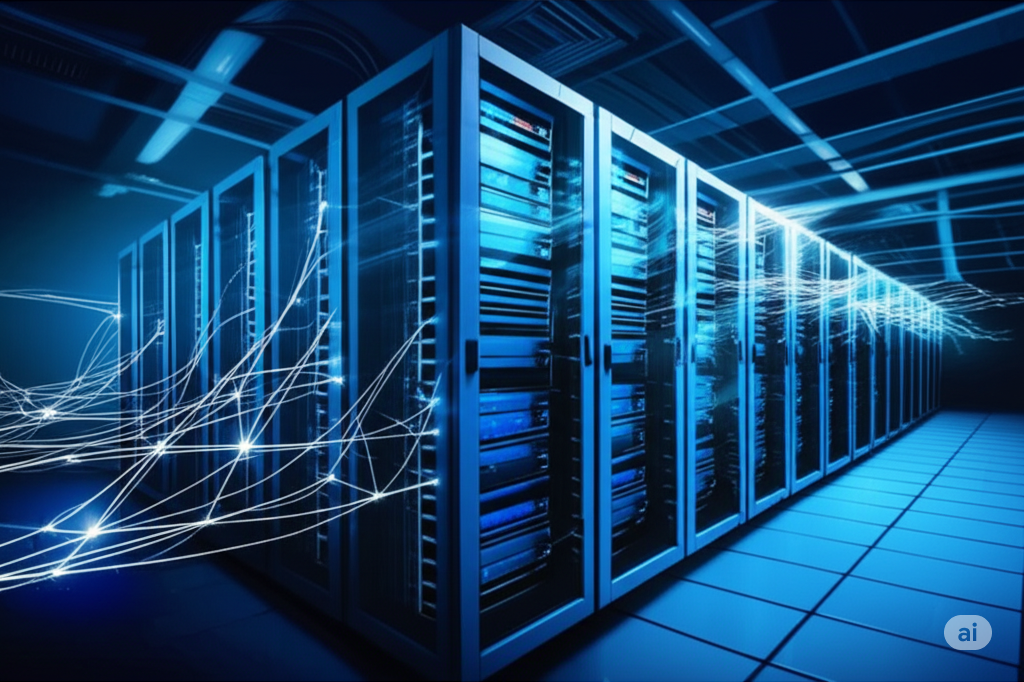The internet, once a series of wires and blinking lights, is evolving at a breakneck pace. While we often focus on the shiny new applications and user experiences Artificial Intelligence (AI) enables, a far deeper, more fundamental transformation is underway: AI is quietly, yet profoundly, reshaping the very physical architecture that underpins the entire digital world.
This isn’t about AI building new cables, but rather about AI intelligently optimizing, managing, and even anticipating the needs of the vast, intricate network of data centers, fiber optics, and servers that deliver information to our screens. Think of it as AI becoming the ultimate architect, not of buildings, but of the internet’s invisible skeleton.
The Data Center Renaissance: Where AI Takes Charge
At the heart of the internet’s physical presence are colossal data centers, consuming immense amounts of energy and generating significant heat. Traditionally, managing these behemoths has been a manual, labor-intensive task. Enter AI.
- Energy Efficiency & Cooling: AI algorithms are now meticulously analyzing power consumption patterns and environmental data within data centers. They predict cooling needs with unprecedented accuracy, dynamically adjusting temperatures, fan speeds, and even the flow of cool air to minimize energy waste. This isn’t just about saving money; it’s about making the internet more sustainable.
- Predictive Maintenance: Imagine a server failing unexpectedly, causing downtime for millions. AI systems can now monitor the health of individual servers and components in real-time, detecting subtle anomalies that indicate impending failure. This allows for proactive maintenance, replacing parts before they break, ensuring higher uptime and reliability.
- Workload Optimization: AI can intelligently distribute computational workloads across servers, ensuring no single machine is overwhelmed while others sit idle. This leads to more efficient resource utilization, faster processing, and a smoother user experience.
Beyond the Server Rack: Network Optimization & Routing
The internet isn’t just data centers; it’s also the vast network of fiber optic cables and routing equipment that connects them. Here too, AI is playing a transformative role:
- Dynamic Network Routing: Traditional network routing relies on pre-programmed rules. AI, however, can dynamically analyze network traffic in real-time, identifying congestion points and rerouting data along the fastest, most efficient paths. This translates to reduced latency, faster downloads, and seamless streaming.
- Bandwidth Management: AI can anticipate peak usage times and intelligently allocate bandwidth, ensuring critical applications and services receive the necessary resources. This prevents bottlenecks and ensures a consistent user experience even during high-demand periods.
- Security at the Physical Layer: While cybersecurity often focuses on software, AI is now being deployed to monitor network anomalies that could indicate physical breaches or malicious activity. By understanding normal network behavior, AI can quickly flag anything out of the ordinary, adding another layer of defense.
The Future is Smart and Self-Optimizing
The implications of AI’s integration into the internet’s physical architecture are profound. We are moving towards an internet that is:
- More Efficient: Reduced energy consumption and optimized resource utilization lead to a greener, more cost-effective digital infrastructure.
- More Reliable: Predictive maintenance and intelligent routing minimize downtime and ensure a consistently stable connection.
- Faster and More Responsive: AI-driven optimization translates directly into quicker load times and smoother interactions for users worldwide.
- More Resilient: The ability of AI to adapt and reroute traffic dynamically makes the internet more robust in the face of disruptions.
The next time you stream a video, send an email, or browse the web, remember the invisible hand of AI hard at work. It’s meticulously orchestrating the physical components of the internet, ensuring that the digital world we rely on continues to evolve, adapt, and serve us with unparalleled efficiency and speed. The internet’s physical transformation isn’t just happening; it’s being intelligently driven by AI.
Refferences

